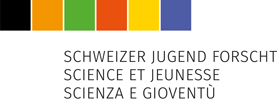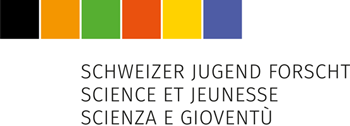Mathematik | Informatik
Mateo Schärer Gonzalez, 2002 | Kerzers, FR
The focus of this paper is on the use of convolutional neural networks (CNN) trained on medical image data sets used to detect the presence of brain tumors. This paper takes a closer look at the images in the Br35H data set, examining the composition of the dataset in respect to image modality. The paper also examines other possible biases which could lead to the inapplicability of models trained on it, and the ethical implications of using them in the clinical field.
Introduction
The goal of this paper is to assess the CNN’s applicability for automatic diagnosis as well as to explore the Br35H data set and its limitations. More generally, this paper examines what needs to be improved in the data sets so that the models trained on them can be fairly applied in the clinical setting.
Methods
A CNN was trained on the Br35H data set. This model consists of 5 blocks of 2 convolutional layers followed by a max-pooling layer and a dropout layer with a 30% dropout rate. The images were first all resized to 225×225 pixels which is the mode image size in the data set. This resize was done with a fixed aspect ratio so that the larger side of the image is equal to the desired dimension. Subsequently the other dimension of the image was padded equally on both sides. For data augmentation purposes, the images were rotated by 90 degrees to increase the data set size by 4. This also has the added benefit of reducing any bias that might arise from unbalances in the data set regarding the location of the tumor. After that the data set was duplicated in size by adding a blurred copy of every image. The final model was then analyzed using confusion matrices to calculate accuracy, sensitivity, and specificity. To assess the accuracy of the model architecture a 10-fold cross-validation was performed. The model was also assessed using a ROC curve to calculate the AUC obtained. To further examine possible biases present in the model, the attention zones were also analyzed. Originally it was attempted to follow the methodology of a paper regarding a CNN architecture trained on the Br35H data set, however the results could not be reproduced.
Results
This paper suggests possible meta data additions needed in medical image datasets, so that the models trained on them are clinically applicable. When examining the composition of the data set regarding image modality (t1, t2, flair), it was evident that although the Br35H data set is equally distributed as a whole, this is not the case within the individual classes. Furthermore, 102 misclassified images were found.
Discussion
For automatic diagnosis models to be applicable in the clinical field, the data set they are trained on must be representative of the general population. To assess if this is the case, the data sets must contain more features. These features include the modality of the images, the type of patient (ethnicity, age, gender), and any preexisting conditions that these patients might have and the reason that a medical image was taken in the first place. Additionally, information on the MRI machine used is also needed, as this also affects the resulting images. The presence of these features is of paramount importance for assessing whether the data set is representative of the general population. Deploying a model that is trained on a biased dataset to the clinical field would be ethically questionable at best and dangerous at worst.
Conclusions
Just like any machine learning model the quality of data is of utmost importance. If there are flaws, biases, or incorrect data points the model’s performance will drop significantly. Therefore, in the future, it would be advisable to gather data with all the attributes mentioned in the discussion to ensure that the data set is representative of the general population. This will allow the creation of machine learning tools useful in the clinical field that give a fair and accurate diagnosis.
Würdigung durch den Experten
Quentin de Laroussilhe
Mateo conducted research on classifying brain tumors using convolutional neural networks. He explored the performance of a machine learning model applied on publicly available MRI datasets, measuring the impact of various data augmentation techniques and architecture choices. The work explores the limitations of the models from biases present in datasets. Mateo gave special attention to the importance of ethics in computer-aided medical diagnosis, and identified the pitfalls such systems can fall into, providing recommendations on how the community could address those.
Prädikat:
sehr gut
Gymnasium Kirchenfeld, Bern 6
Lehrer: Stefan Rothe



